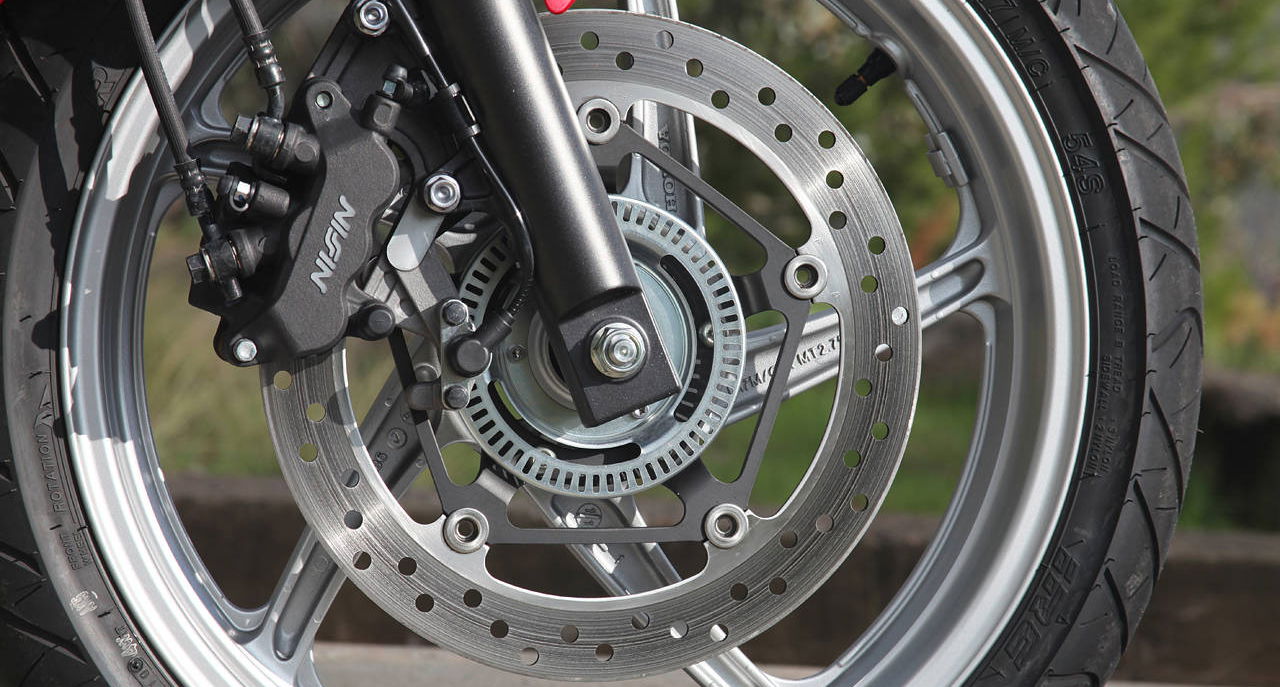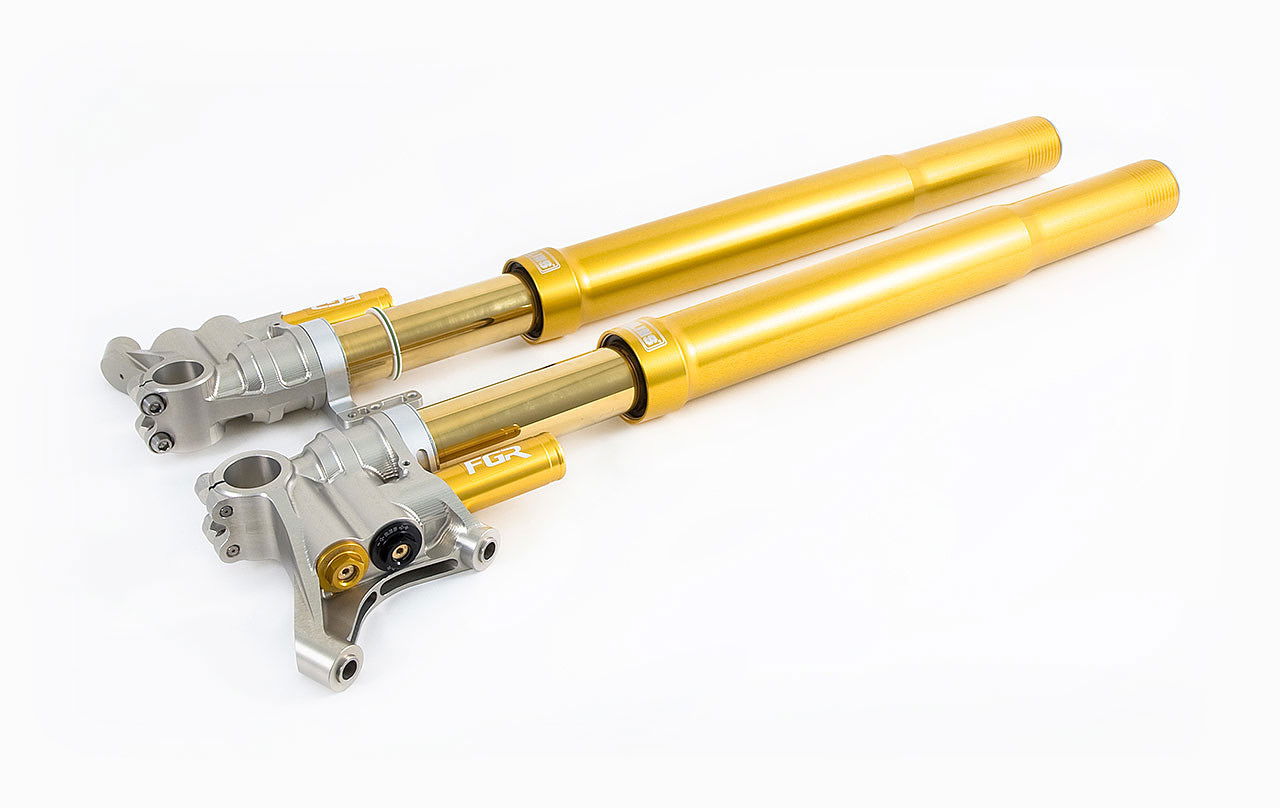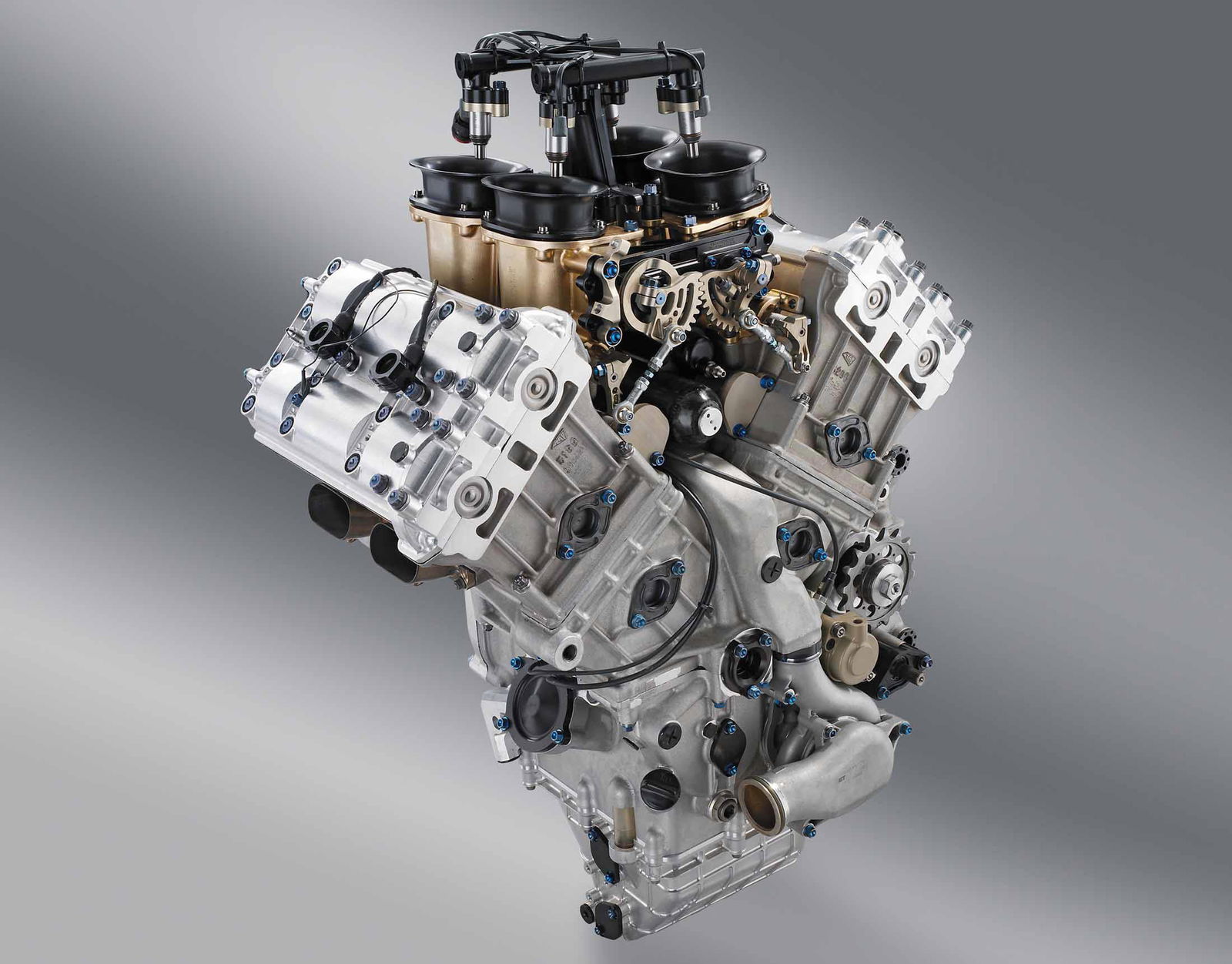Top ten technical leaps forward
Which are the motorcycling ideas we can’t live without…

INEVITABLY the history of motorcycling has been littered with ideas – good and bad – over the last 120 years or so. But which have had the greatest impact on our lives?
No doubt we’ll all have ideas about which pieces of technology are the most important, but there’s no question that some ideas have stuck stronger than others.
Whittling more than a century of innovation into just ten ideas is bound to be controversial. Some people might consider their Bluetooth communications to be the greatest motorcycling idea ever. They’re wrong, of course, but each to their own.
10: Disc brakes
Do you remember what it’s like to ride a bike with drum brakes? If you do, you’ll probably agree that discs are among the greatest steps forward in motorcycling history. Yes, we know, a perfectly-adjusted drum brake can be surprisingly effective, but discs are low-maintenance, high-performance and basically leagues better than their predecessors. What’s more, they’re arguably simpler, and there aren’t many technical advancements that can claim to be more straightforward than the ideas that came before.

9: ABS
This might be a bit more controversial, since there’s still a hard-core of riders who seriously believe they can brake better without anti-lock, but ABS has probably prevented more accidents than any other single technical advancement. While ABS on bikes has been available for 30 years, and prototype systems date back to shortly after WW2, it’s really been in the last decade that the technology has come of age. Modern ABS – particularly the latest lean-sensitive systems – are approaching magic in their ability.
Top ten technical leaps forward - page two
8: Alloy beam frames
For the vast majority of the history of motorcycling, steel perimeter frames were the norm. But the switch to aluminium beams, at least on some bikes, from the 1980s onwards, represented a real development that made its way from motorsport to the road, giving normal riders a genuine improvement over what came before.

7: Telescopic forks
At least a couple of times every year it seems we’ll be told about some new front suspension technology that’s somehow going to be far, far better than the telescopic forks that the vast majority of bikes have used for the best part of a century. Inevitably, those technologies singly fail to live up to their lofty ambitions, and telescopic forks remain the go-to front suspension technology for bikes. Scott is widely regarded as the first firm to use the design as far back as 1908, although it was BMW’s introduction of hydraulically-damped teles back in 1935 that really laid down the pattern that’s still followed today.
Top ten technical leaps forward - page three
6: Monoshocks
It was only in 1972 that Yamaha introduced the monoshock, initially on motocross bikes, and although the idea of using a single spring and damper at the back, rather than one on each side, has appeared far further back in biking history, it was that Yamaha move that saw everyone else following suit. The systems also made the introduction of rising rate linkages far easier, giving springing that would get progressively stiffer as the rear end compressed.

5: Multi-cylinder engines
Early motorcycles were generally single-cylinder creations, and can you imagine if that had remained the case? Of course, we could argue that the Hildebrand & Wolfmuller, the first production bike ever built, was a twin, but since its rear spindle doubled as the crankshaft, driven by the conrods rather like an old steam engine, it’s hard to argue that it laid down the pattern that other bikes would follow.
Proper multi-cylinder engines – V-twins, parallel twins, V4s, inline fours or sixes, boxer twins, fours or sixes – have given rise to an incredible spectrum of motorcycles, each with their own character, over the decades. And there’s no other vehicle that relies as much on its engine configuration for its style and character as a motorcycle.
Top ten technical leaps forward - page four
4: Fairings
You can find examples of bikes with wind-deflecting fairings going right back to the dawn of riding, which makes it all the more remarkable that the BMW R100RS of 1976 is still widely regarded as the pioneer in the field of fairings. However, regardless of which bike you see as being the genesis of the concept, there’s no question that slipping a wind-cheating plastic shell around the greasy bits makes a remarkable difference. Whether you’re looking for out-and-out performance or simple a more relaxed ride, the fairing – provided it’s well designed – will be vital to achieving that goal.

3: Fuel injection
There’s no question that the carburettor is one of the cleverest pieces of engineering ever to grace a consumer machine. Its ability to mix air and fuel in the correct ratio, using nothing but some ingenious design and an understanding of fluid dynamics to do it, is simply brilliant. Bear in mind that when MotoGP went four-stroke back in 2001, many of the bikes on the grid – the absolute pinnacle of motorcycling tech – used carb-fed engines. And in many ways that’s what makes modern electronic fuel injection so impressive – it not only replicates what a carb can do, but improves upon it. It took a long time to get there, but now it’s impossible to imagine going back.
Top ten technical leaps forward - page five
2: Ride by Wire
Ride by wire, which replaces the throttle cable with a sensor and an actuator, is another relative newcomer. The first production bike with such a system was the 2006 Yamaha R6, but today virtually everything has it. Very few pieces of tech have spread so far, so fast.
What makes it clever? It’s the fact that it allows the bike’s engine management to computer to step in and assist, usually without us even knowing. It means that engine no longer need to be engineered to react in a linear fashion as the throttle butterflies are opened – the throttle mapping can gift them a linear response by changing the way the butterflies respond to the movement of your wrist.
What’s more, ride by wire means we can have multiple riding modes, it means we can have traction control, it means we can have wheelie mitigation and bikes that combine breath-taking performance with an unheard of level of usability. It’s an unsung hero.

1: Helmets
Does a helmet count as a piece of motorcycle technology? We’re saying so, simply because so many of us have felt their benefits over the years. First, there’s the whole ‘not dying’ thing. That’s good. If you crash a bike, there’s a fairly strong chance that you’ll take a knock on the bonce, and having something more than skin and bone to absorb that is something we’re all thankful for. Who knows, perhaps in the future some of the other tech we’ve mentioned – ABS and ride-by-wire, for instance – will help to make bike crashes a thing of the past. But even when it does, the helmet’s ability to keep the wind out of your eyes and the bugs out of your teeth will still make it a must-have.

